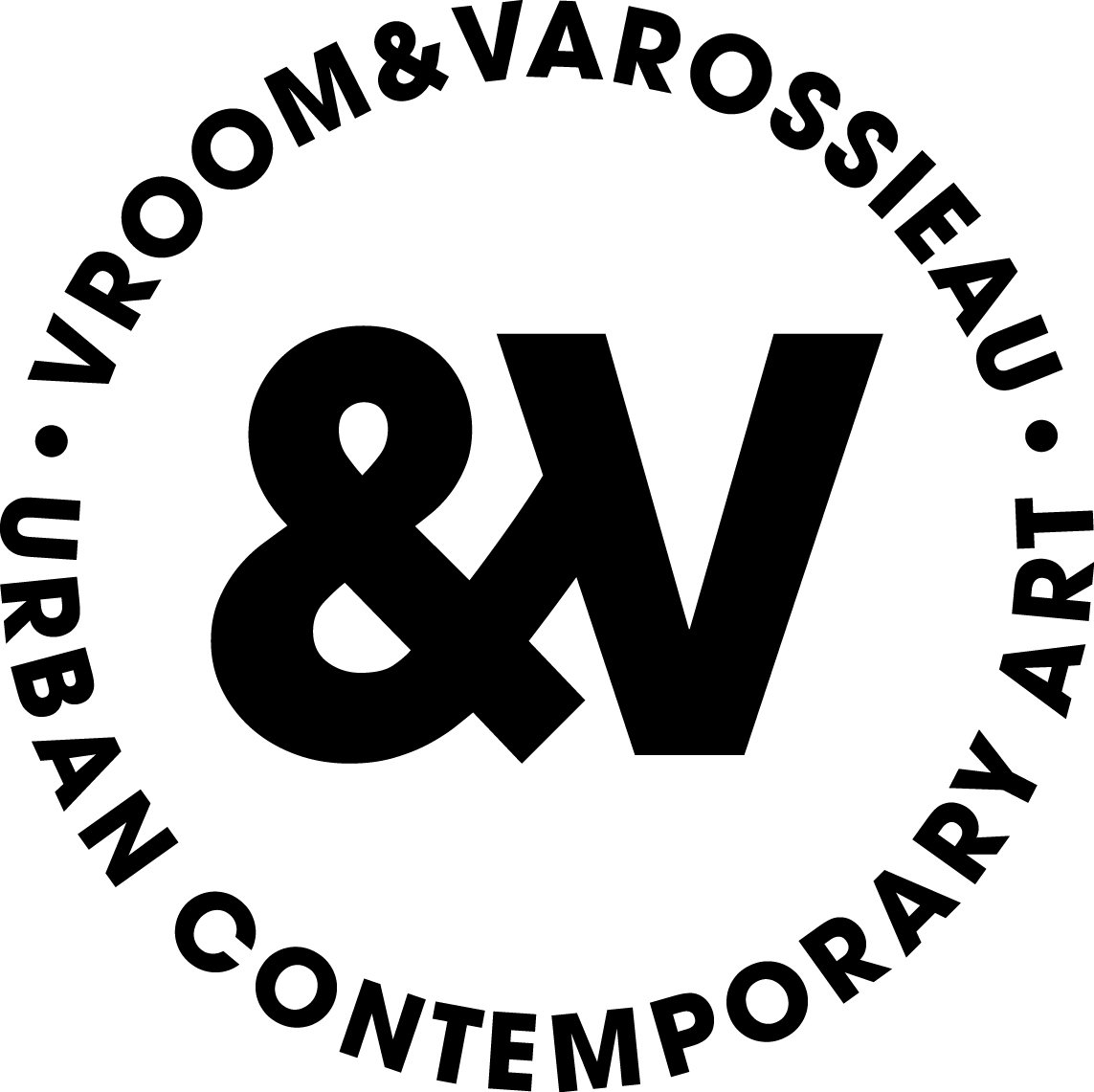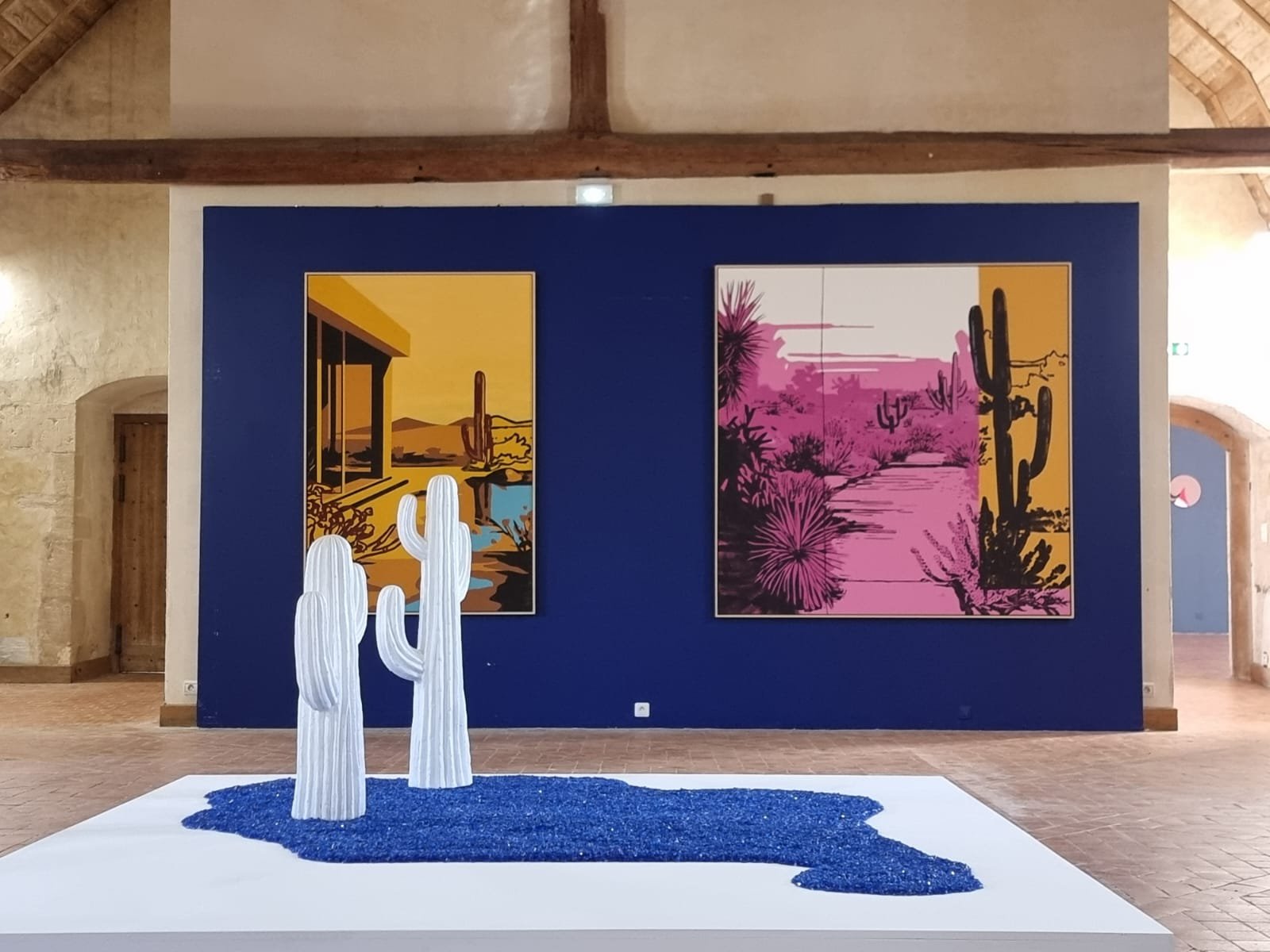C’est porqui, mEs bien-aimés, fuyez l’idolatrie -Loïc FENX Le Floch
Centre d’arts plastiques et contemporains Prieure De Vivoin
16 September - 11 November 2023
Nadège Buffe, director of the Taglialatella gallery, in collaboration with Jérôme Dauchez, director of the Center for Plastic and Contemporary Arts (CAPC)*, at the Vivoin Priory, are delighted to present, for the first time, a solo exhibition by Loïc Le Floch, also known as Fenx.
The purpose of this exhibition is to foster a dialogue between two venues with very different characteristics and geographies: the gallery and the Center for Arts.
For Fenx, the opportunity to present his work in this colossal space steeped in history and religiosity, articulated in three large exhibition halls representing worship and idolatry, is a precious source of inspiration.
Indeed, if Fenx wishes to honor those who preceded him and formed his references—his idols—it is to grant himself the freedom to venture into new artistic realms and allow himself to break free from the boundaries he had imposed on himself until now.
Since the earliest masterpieces of humanity, artists have always been influenced by their predecessors or contemporaries. This intentional or sometimes unconscious influence can take various forms, allowing artists to surpass what has been done before.
Artists can thus develop new ideas, leading to the creation of new standards or concepts that evolve throughout the history of art. Those who contribute to establishing these new perspectives gain recognition that elevates them to the status of idols. New idols then succeed them, having pushed the boundaries even further and distinguished themselves from those who came before.
This perpetual rhythm gives art history a continuous conversation between the old and the new, involving resonances and oppositions that enrich the artistic canon—a silent and enduring artistic conversation throughout history.
This issue has been a significant focus in Loïc Le Floch's artistic journey. From his early exhibitions, he often turned to exploring his own artistic references.
Aware of the thread of inspiration that connected Matisse to the artists who followed him, driven by the radicality of Fauvism in breaking free from color and form codes, Fenx has frequently made an effort in his paintings to honor these exchanges between spiritual predecessors and successors. He is fascinated by this ongoing conversation nurtured by history, and only those who understand the references can fully appreciate its richness.
Fenx - Maybe I just wanna be yours, 2022
Like the French youth of the 1980s, immersed in American culture, consumerism, and pop culture, Fenx does not hide the direct influence of American Pop Art masters on his work.
The female nude, a favorite subject for Fenx, has always been, under the artist's brush, an expression of a simplified silhouette often combined with elements of pop culture or idols. Indeed, the feminine in all its forms is an endless source of inquiry for the artist, sometimes represented through sensual and athletic figures in Californian pools, or directly in reference to Wesselmann when playing with the codes of the American painter, as seen in his series "Fenx et Wesselmann." He even goes as far as playful nods, notably with the work "Monica et Fenx," a reference to the famous "Monica with…" series.
Fenx is aware that when he represents his nudes in a more abstract treatment, duplicating figurative details, his nudes take on sensuality and simplified forms reminiscent of Matisse, even including "fishes." The ongoing and silent artistic conversation of history becomes more precise because American Pop Art painters themselves celebrated the Fauvism leader. Warhol declared in 1956, "I want to be Matisse," just as Roy Lichtenstein and Tom Wesselmann quoted him, not to mention Wesselmann's famous studies on Blue Nudes...
American Pop Art succeeded Abstract Expressionism, and Fauvism radically changed the approach to color and flatness. Deeply attached to these fundamental painting reflections, over the years, Fenx has explored the boundaries between figuration and abstraction, the emotions of color, and the existence of flatness when wanting to add relief.
For a long time, the artist aligned himself with his idols without truly wishing to break free from them.
However, guided by an inspiration as determining as it is liberating, for this museum exhibition, the artist followed the obvious path of light—California.
Just as Matisse celebrated the light of the South, the luminous gradients and infinite spaces of California have become, for Fenx, the vital source of a new exploration of color and relief, influenced by the unique characteristics of these landscapes that feed into the abyss and surreal mirages.
From that point on, Fenx ventures farthest into the treatment of codes and breaks free from his idols in a museum space where worship and idolatry echo each other.
Like Matisse, for whom black was color and light, Fenx liberates shapes and plays in a novel way with contours, flatness, color palettes, and relief, expressing the desire to bring together two eras or two worlds that reflect each other among the colorful shadows of landscapes in Californian pools, bathed in a singular light that leaves the viewer suspended, uncertain if they are about to tip into a new world.
*The CAPC – VIVOIN, located in the Vivoin Priory near Le Mans in Sarthe, offers contemporary exhibitions, conferences, meetings, artist weekends, and performances in an exceptional setting.
**"The Mystery of Andy Warhol," Les Échos, October 20, 2000.


